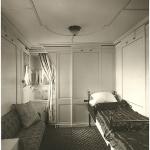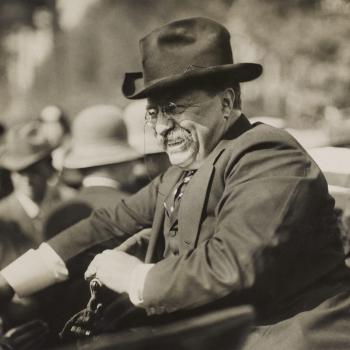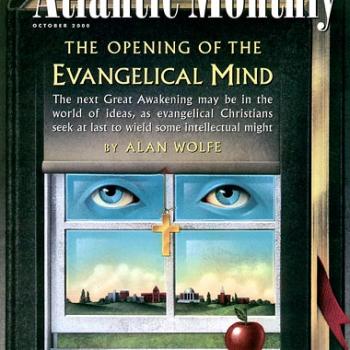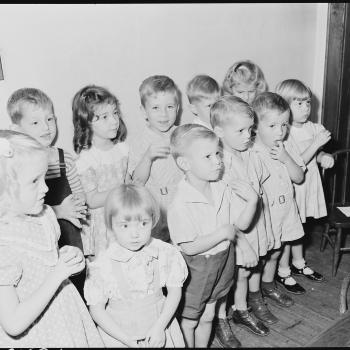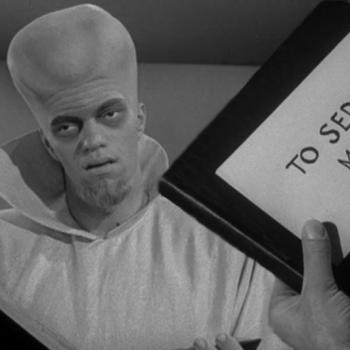David French at National Review argues that Protestants have a stake in the sex scandal now roiling the Roman Catholic Church because all Christians are in this together:
The Church is like a navy, a collection of ships united in purpose and in destination. Each denomination is like a different ship in that navy, and while each crew is primarily tasked with the health and well-being of its own vessel, it’s also deeply invested in the strength of the fleet. Each vessel is more vulnerable as the fleet weakens. Each vessel is stronger surrounded by its protective armada.
If the analogy holds, then one of the mightiest battleships in the fleet, the Catholic Church, is taking torpedoes left and right. It’s now rocked by allegations of wrongdoing that go all the way to the Vatican, to the pope himself. . . .
None of us has the luxury of believing “our” institutions are safe or that “our side” of the Christian divide has adequately guarded itself against the demonic spirit that stalks the land.
Ships in the Christian armada are ablaze. We must not simply sail on and leave them to their fate.
I wish French would acknowledge how distant this view is from the sixteenth century. With celebrations of the 500th anniversary of the Reformation not that distant — it was last year, after all — bringing up the differences that produced Protestantism does not seem all that irrelevant. Would Luther have looked at Rome as “united in purpose and destination” with Lutherans, or would Pope Leo X have regarded Luther as an ally in battles against sin and infidelity? I doubt it. Perhaps times have changed sufficiently that the differences of the sixteenth-century don’t matter any more, though it’s hard to believe why Christians would not think sin, salvation, grace, and judgment vary according to time and place. In which case, shouldn’t French as a Protestant be more forthright about Protestant-Roman Catholic differences?
Some Roman Catholics are increasingly aware of those differences and Kevin Gallagher is one of them. He wrote recently against the fusionism (Roman Catholicism and American socio-economic norms) that dominated post-Vatican II Roman Catholicism:
The hoped-for “Catholic moment” at least presumed a culture in which the Church and ordinary American life might be easily combined, and in which the Church’s greatest moments of tension with American life could be understood as a kind of “loyal opposition.” At least for a couple of generations in the middle of the twentieth century, this is the role the Church played. And although becoming part of the establishment incurs certain costs, there is no doubt that this gave the Church a degree of cultural prestige and influence that nudged politics in a more Catholic direction.
The Church has now completely lost this role. Although it continues to do charitable works on an immense scale and its bishops are never reticent on political questions, Catholics today, and especially young Catholics, live in a heightened tension with the world around them. In media, at law, in HR trainings, in advertisements, Catholic distance from mainstream culture is growing in a way that makes fusionist attempts merely to supplement American culture unrealistic. Young Catholics now live in a context in which their deepest ideals and aspirations are no longer merely unusual, but oppositional. These signs were there to be seen well before the Obama years, and opponents of the fusionist synthesis pointed them out from the 1960s onward.
Gallagher is indeed representative a recent anti-liberal turn among Roman Catholic intellectuals. These believers want to be more Roman Catholic than American and even believe that cooperating in American mainstream society has eroded religious faithfulness.
What this means for David French is that he is looking at the American church scene from the vantage of the old Roman Catholic fusionists when faith and Americanism was compatible and even evangelical and Roman Catholics cooperated together. The fusionists looked to build bridges to mainstream American institutions and with non-Roman Catholic Christians. According to Gallagher:
[The fusionists] were confident that “pelvic orthodoxy,” combined with market-oriented but “compassionate” economic policy, would secure a Republican future. A faith in the “ordinary” citizen prompted hope for referenda on gay marriage; opinion polls seemed to suggest a larger public rethinking of abortion; and the Bush-era “faith-based initiatives” promised a model in which church, state, and private enterprise might cooperate harmoniously for the good of all. With sectarian squabbles muted, Catholics and Evangelicals would have the ideas and the votes to effect lasting political change. Catholics told themselves, and believed, that they were no longer a reactionary rearguard, but were on the cusp of triumph. A Catholic-inspired conservative politics appeared to have momentum and, more than that, it deserved to have momentum. These trends were not just happy turns of fate; they were signs that the political philosophy cobbled together by Catholics and conservatives was correct and illuminating and destined to win. The leaders of this movement may not have been the “Theocons” of Linker’s title, but they fancied themselves essential contributors to the intellectual project of holding together the American regime in a way that might preserve Catholics and the Church from the threats of secular liberalism. And it was no downside that in the process they might come to hold crucial positions of state.
That outlook explains French’s notion about Rome’s relationship to other churches. But the National Review writer does not seem to be aware that the big ship in the fleet may have already left the harbor.

